If you have a garden or backyard in your home, then you probably come across beetles daily. And if you have observed beetles closely, you also would know how fascinating these insects look, right?
Unfortunately, many insects roam around in our gardens, and identifying them may seem like a difficult job. However, Beetle identification is quite simple if you get to know their features.
There are over 4,00,000 species of beetles in the world. They are divided into families and subgroups. You cannot find all types of beetles in your garden, but there are some common types of beetles that you would observe.
Here, we have got you the most common types with accessible beetle identification features. So keep reading, and you will get to know the beautiful insects in your garden.
Common Types of Beetles
Green Fruit Beetles
This is a green-colored beetle that you will find commonly in mulch, compost heaps, and yards or gardens. These beetles have a glossy green shell with orange edges and have metallic green belly and legs.
Green fruit beetles belong to the family ‘Scarabaeidae’ and are probably the most widespread in their family. Also known as ‘Jewel beetles,’ these beetles make a lot of noise while they fly. You will find them with short heads and antennae in a tiny size (17 to 34 mm).
Black Carpet Beetles

These dark-colored beetles are probably one of those beetles you would not want to have in your home at all. The reason behind this hate is that their larvae can chew even through fabrics. In addition, these black beetles are tiny (3 to 5 mm) and have an elongated oval body.
You would find these beetles mostly indoors, where organic material is stored. If you find holes in your furniture or any evidence of this carpet beetle, you will have to get rid of them in no time. The hairy brown grubs can stay in the larval stage of the beetle for around three years. During this time, they can easily ruin any fabric. This is the reason one should not have these carpet beetles in their surroundings.
Green June Beetles
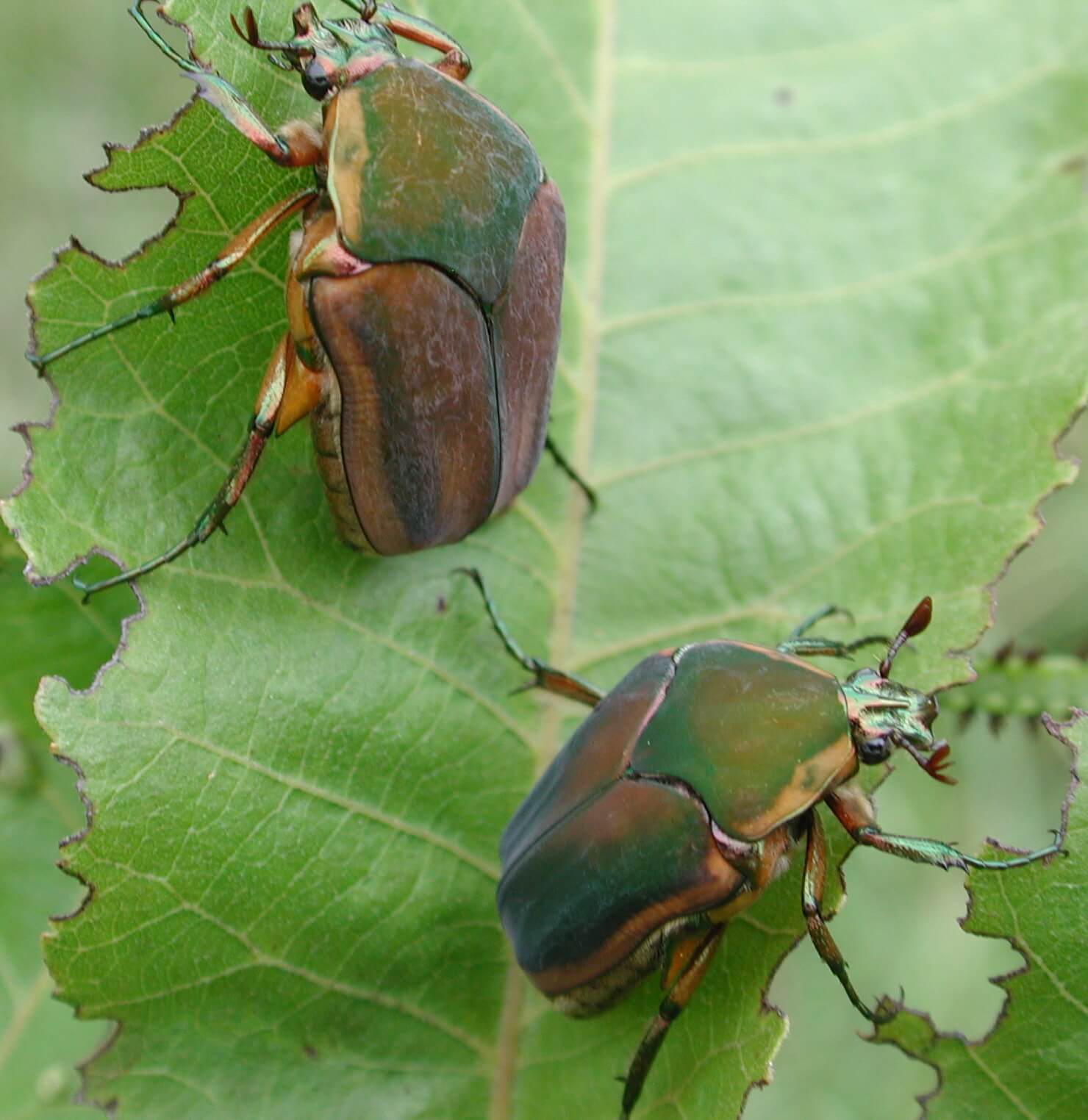
Green June beetles look like green fruit beetles. These green beetles can be found the most in early summers and love feeding on ripening fruits. However, green June beetles can be more destructive for your garden than green fruit beetles.
These beetles have wings in dull green color, which cover their delicate brown wings on the back. You will find these beetles in a size of 20-25 mm, and you may confuse them with Japanese beetles if not observed.
Ten-Lined June Beetles
The Ten-lined beetles look very interesting with ten white strips on their brown body. Another feature of this beetle identification is their large antennae that look like curved paddles.
These beetles also belong to the family ‘Scarabaeidae’ and are commonly found in the early summers. These beetles can be destructive to your garden because they feed on plant roots. In addition, they make a hissing sound when they feel threatened, so if you hear it, you need to be aware. Moreover, they have a glossy brown body in an oval shape, and their size varies from 25 to 35 mm.
Lily Beetles
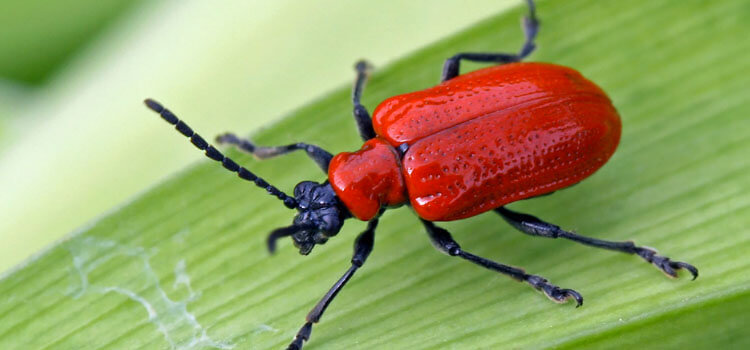
Lily beetles come in red color and are tiny in size (7 to 9 mm). Due to their pretty color, they are also known as Red Scarlet Beetles. These beetles have bright red wings and black antennae, bellies, and legs. You will also find a tiny black triangle behind their thorax.
These beetles are often confused with cardinal beetles because of their similar red and black combination. Another feature of beetle identification for them is chewed lily leaves because they feed on lily leaves. So, if you wish to grow lilies in your garden, you will have to be aware of these lily pests.
Grapevine Beetles
Grapevine beetles are commonly found in forest woodlands and bushes. You will find them in a pale orange shade and black lines dividing their wing covers and thorax. Grapevine beetles get their name from their habit of feeding on grapevines. However, no significant harm is caused, and so they can be allowed in gardens and yards.
These beetles are also called ‘Spotted June beetles’ because of the four dots located on the side of their body. If you find these beetles in your garden, make sure you do not go too close and do not disturb them because they fly away right away when they get disturbed. They come in size to be seen easily (25-30 mm), so you can find them quite easily.
Hercules Beetles
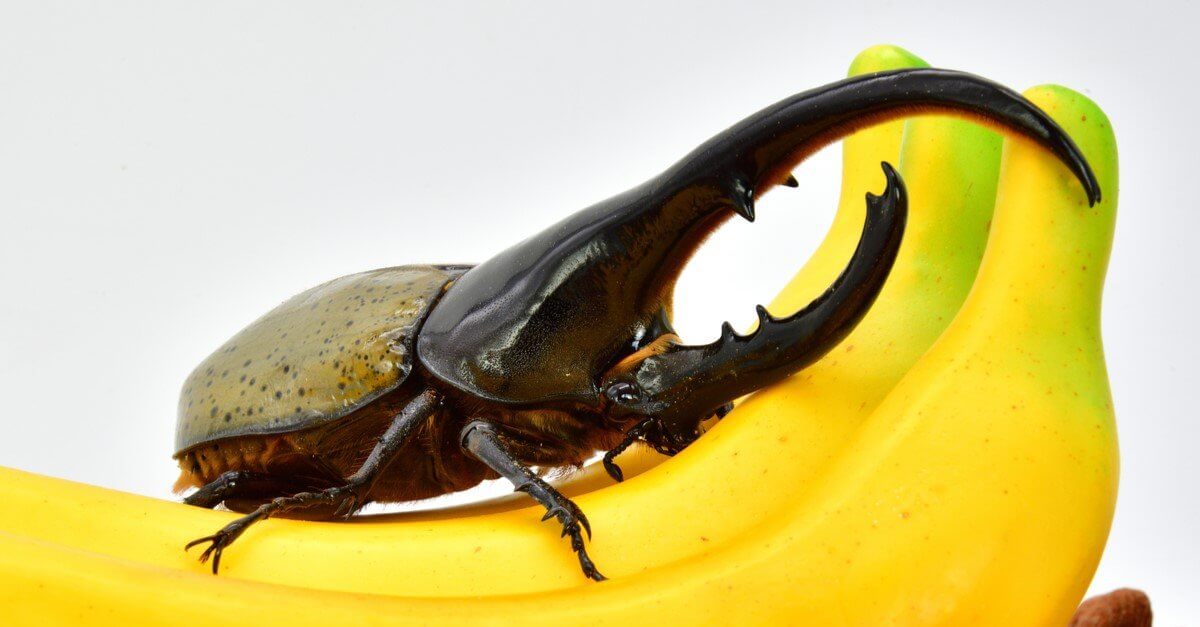
As its name suggests, these beetles come big, 40 to 60 mm long and around 2 to 3 cm wide. The Hercules beetles have attractive horns and are also known as rhinoceros beetles. The best thing about these beetles is that even after being massive and large in appearance.
These beetles also come in various colors like green, brown, and shades of grey with black spots or markings. These black spots are unique on every individual beetle. Another interesting fact that would amaze you is that these beetles are considered one of the giant insects in the world. These scarab beetles are also popular pets in a few countries.
Stag Beetles

Stag beetles have a large black body of around 5 cm; some of their species also grow up to 12 cm. One of the beetle identification features in them is the large mandibles or pincers that males have. Both the male and female stag beetles have mandibles; females have shorter as compared to the males.
Even with large mandibles, these beetles are safe because they do not bite humans. However, you may find the male beetles getting aggressive with each other sometimes.
Soldier Beetles
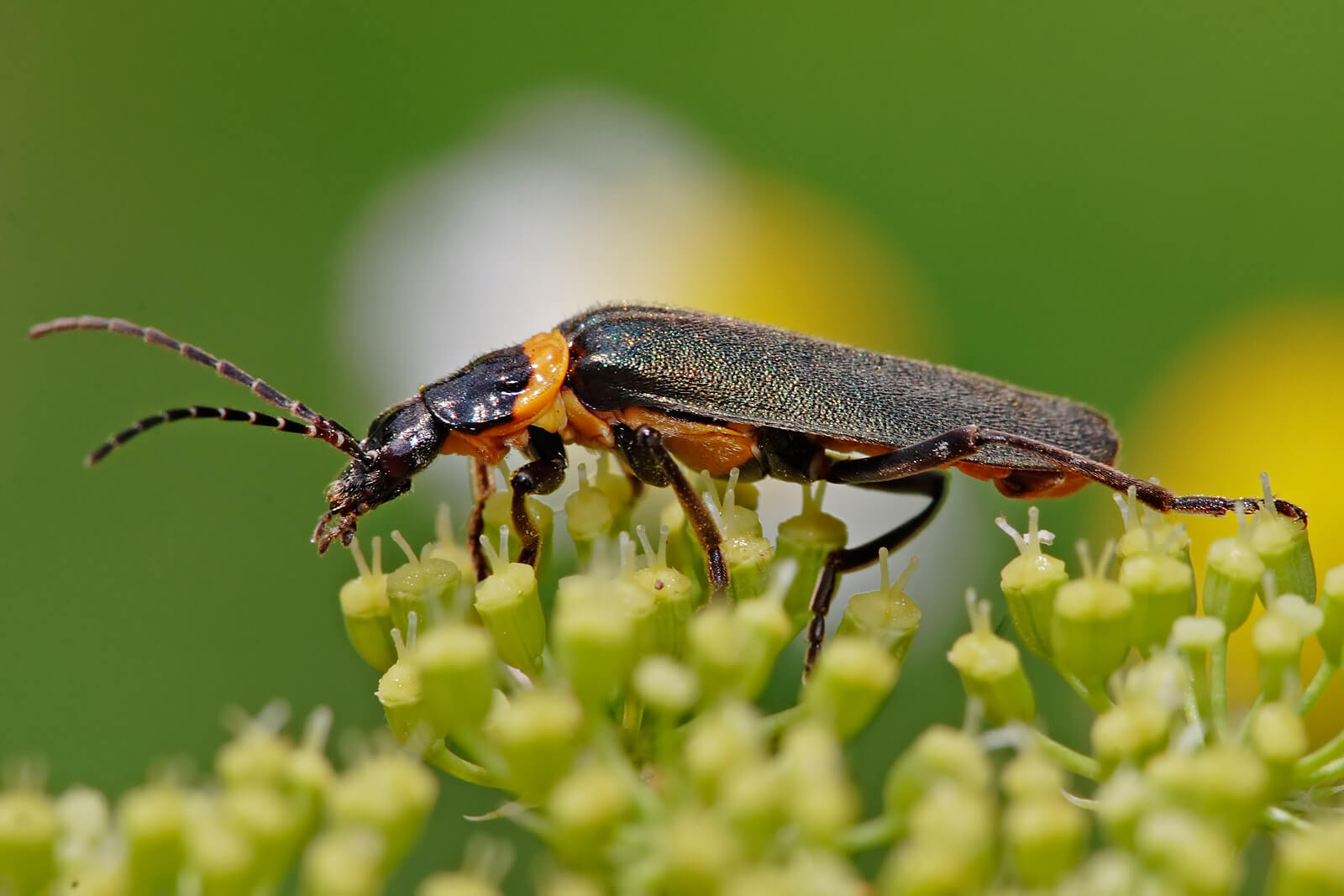
The soldier beetles have an attractive long body in black and orange combination. What makes these beetles stand out from the crowd is their non-curvature body; that is, you will not find any curve in their body structure. Also, they have long antennae. You will find them usually flying around flowers, and one may mistake this beetle for a wasp.
These beetles have soft and leathery wings; due to this, they are also known as leatherwings. Moreover, a soldier beetle gets its name from its unique body structure, which, people say, resembles the British red coat soldiers. These beetles are harmless and come in a tiny size (around 25mm).
Drugstore Beetles
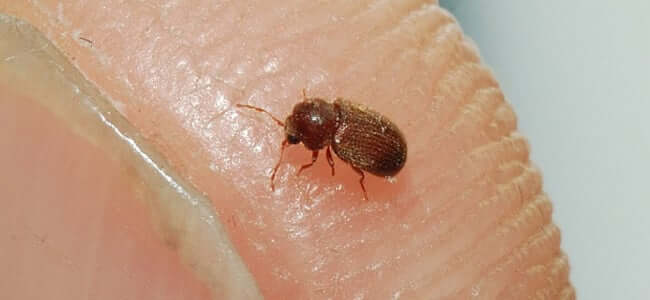
The drugstore beetles are tiny brown beetles that vary from 2 to around 3.5 mm. These flying beetles are like cigarette beetles in appearance. You will find antennae on them with serrated edges. Moreover, they are called drugstore beetles because they love to feed on stored products like bread and biscuits.
However, their diet is quite wide as they also rely on cookies, paper, old leather, and much more. Adult beetles of this species have fine hairs and lining around their cylindrical bodies. These are legit one of the most common beetles throughout the world and are the destructive ones too. These destructive beetles can destroy all kinds of dried food, including grains and seeds.
Sawyer Beetles

Sawyer beetles are a common type of insect to be found in gardens and yards. As the name suggests, sawyer beetles can quickly drill into various softwoods. A unique beetle identification feature for this insect is its very long antennae. You may find some of the insects in this species with antennae more extended than the length of their body. Also, you will find these flying beetles attracted to light.
Sawyer beetles are commonly found in forests with pine trees, and they may be found in your area depending on the trees your surrounding has. As these beetles feed the most on pine woods, they are an invasive pest for the wood. A sawyer beetle builds various tunnels into woods which causes up to a 50% decrease in the value of the woods.
Colorado Potato Beetles

The Colorado potato beetles are almost round and have brown and orange or yellow stripes on their bodies. These potato beetles are harmful to plants and crops as they feed on crops, including potatoes. Also, they fly very quickly from plant to plant.
Moreover, these beetles come in a small size of around 6 to 10 mm. These beetles are said to have ten stripes on their back.
Cucumber Beetles
Another striped beetle is the cucumber beetles which are identified by their unique black and yellow stripes. These black and yellow stripes run the length of the cover of its wings. These beetles are an invasive pest for edible leaves of cucumber, pumpkins, and melons as they feed on these leaves. These destructive beetles come in a size of around 10 to 13 mm.
Japanese Beetles

These are some of the most beautiful beetles you would find out there. A Japanese beetle comes around 15 mm long and 10 mm wide with a shiny green head. This beetle has stunning and hard wing covers in the shade of copper.
Japanese beetles are also the most common pests you will find. They feed on over 300 species of plant leaves. Other than its attractive shiny color, tufts of tiny white hairs under its wing covers (elytra) are a beetle identification feature you should know. Moreover, they also feed on many fruits.
Tiger Beetles
If you go deep, you will find tiger beetles in different colors and shapes, even with varying habits. These beetles can be easily mistaken for another species of insect altogether. This is because they are aggressive and come with long antennae, skinny legs, and curved mandibles.
There are over 2500 species of tiger beetles in the subfamily Cicindelinae which vary widely in their color and body structure. Some come in bright colors, whereas some tiger beetles come in dull black color. However, one common beetle’s identification feature is that most run fast and have long legs. You would find these tiny beetles (10 to 20 mm in size) commonly in hot climates.
Ground Beetles
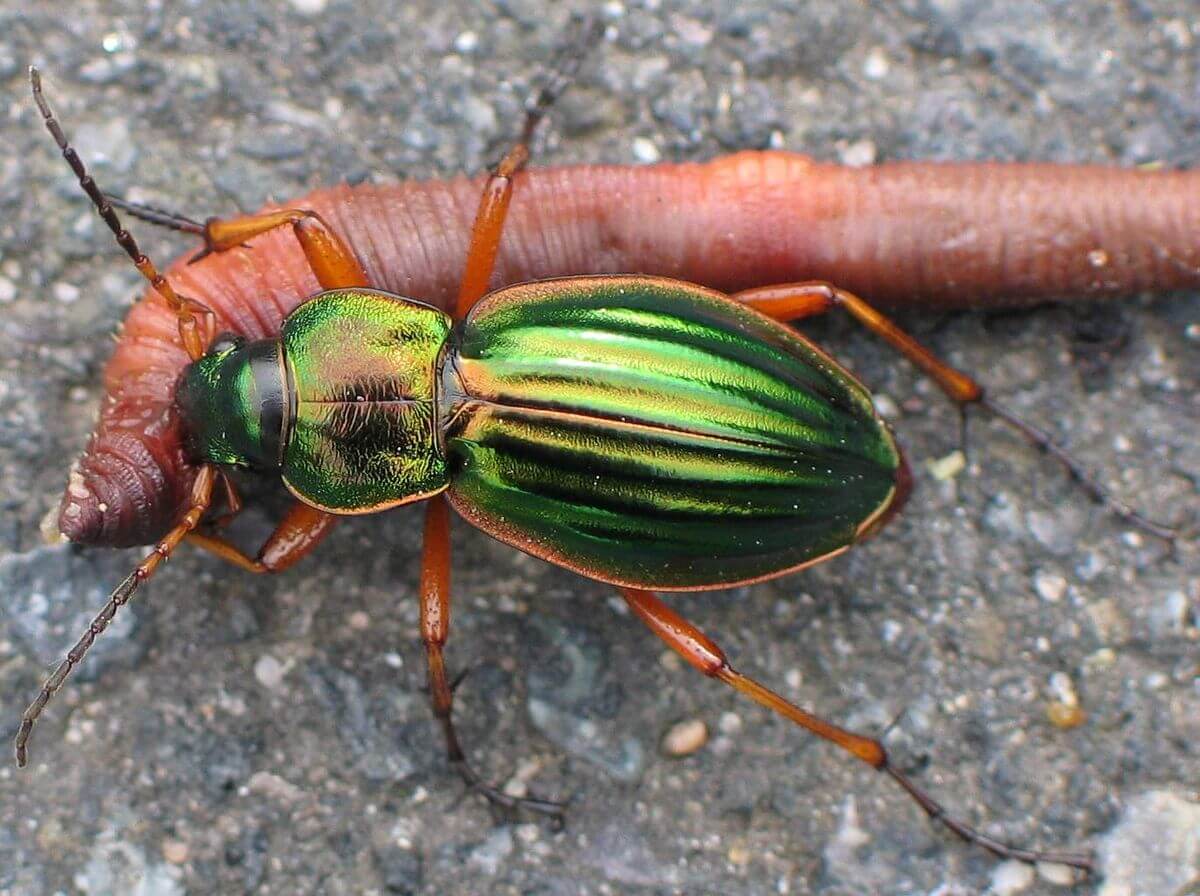
You will find thousands of species under the name of ground beetles. All these beetles belong to the Carabidae family. However, one of the most attractive beetles in the family is the golden ground beetle. This beetle has a shiny green body with a metallic finish and a mirror-like sheen with spindly brownish-red legs.
Other types of ground beetles have bodies in varying colors, from grey to black to even green. Some also have patterned markings on their back. You will usually find them scurrying on the ground because they feed on worms, snails, and insects. A common beetle identification feature for this species is their shiny bodies, long legs, and around 35mm.
Pale Green Weevil Beetles
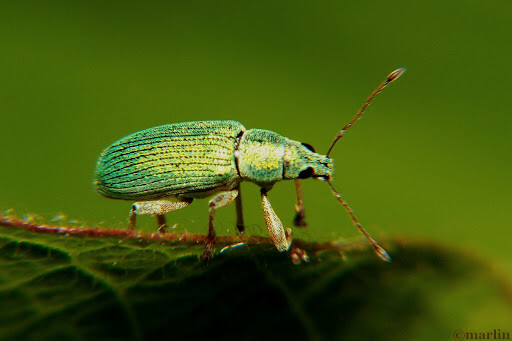
There are over 83,000 species of weevil beetles. Weevil beetles come in a tiny size of around 5 to 7 mm. You will find long antennae and a slender pale green body. However, these beetles reveal a body of brown and black shade when they raise their wings to fly. These beetles are destructive only to tree saplings.
Moreover, they feed on green leaves. Therefore, their light green body acts as camouflage when these beetles feed on leaves.
Ladybug
Commonly known as Ladybug, this insect is a beetle, and Lady Beetle would be the correct name. These beautiful, winged beetles belong to the family Coccinellidae. You will find them in bright red color with black dots on their back.
Moreover, these lady beetles are not at all harmful to your garden or yard. They instead prove to be beneficial for gardens as they help in controlling the aphid population. There are many types of common lady beetles in the family that inhabit gardens and yards in summer.
Fireflies
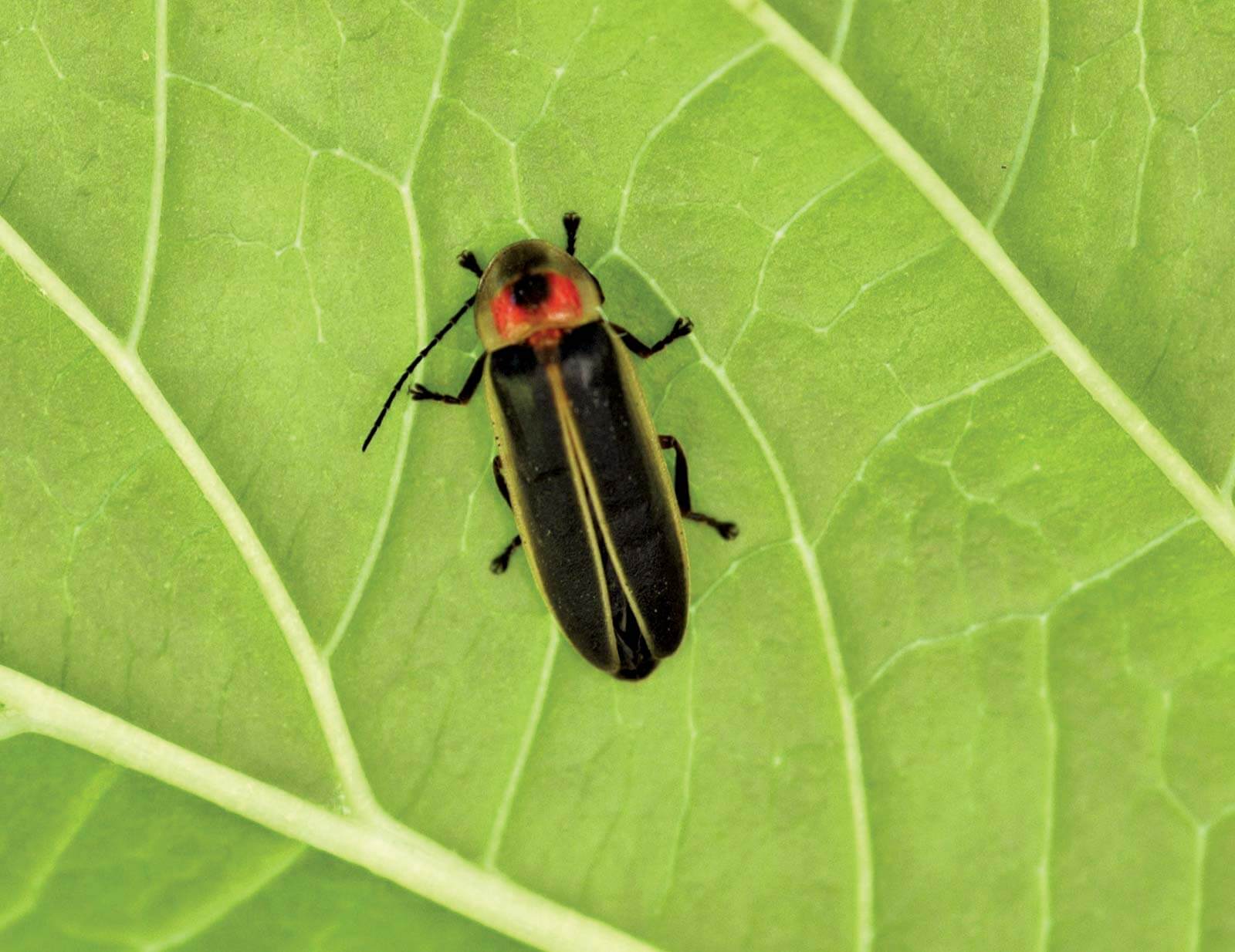
Fireflies are another beetle that is mistaken to be a whole different insect. Fireflies belong to the beetle family Lampyridae. Fireflies are nocturnal beetles that glow in the dark and hence look fascinating. This is also the reason they are known as glowworms in some countries.
Fireflies use chemical light to attract both the prey and the mate. They usually come out at night and use this light to attract their mate. There are over 2000 species of fireflies one may find. All of them have different habits and features. Moreover, you will find them around 2 to 3 cm long in size. You can find them at any place where grass or greenery is.
Carrion Beetles
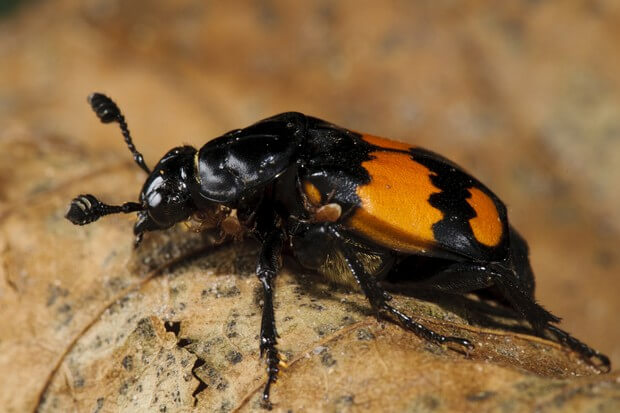
Carrion beetles are giant and come in bright colors. Most of the species of carrion beetles are good at flying and are also called burying beetles. The reason for their second name is they dig into the carcass until it falls in. The beetles then lay eggs under the food sources and cover them up. Many more unique and gross habits can be found in carrion beetles.
Moreover, these beetles also feed on dead animals like a bird or a mouse. These beetles come just around an inch long, but their adaptation habits on providing in or around carrion are excellent.
Emerald Ash Borer
The emerald ash beetles look utterly beautiful but are also equally invasive. The emerald ash beetles belong to the family of jewel beetles. The larvae cause actual destruction. It is first laid as eggs on tree barks; they get burrowed into the tree after hatching. Through a considerable time, trees get to wilt and eventually die.
The size of this beetle never goes more than half an inch. Though a very tiny insect, this beetle can still destroy many trees.
Explore Your Garden
Now that you know how to identify the various common beetles by their colors and features, why wait? Go ahead in your garden and see how many beetles visit you? Beetle identification helps us explore our nature and helps us keep our plants safe and secured.
Most of the beetles are harmless and can be beneficial for the garden. However, few beetles can ruin the plants and vegetation. Some beetles can also bite. So, beetle identification will help you find and keep the harmful beetles away from your plants and yourself. So, dig into your garden and enjoy the beauty of these tiny insects!

